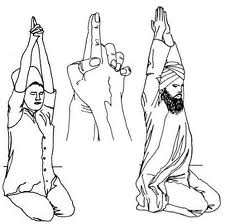The Power of Commitment in Meditation
Meditation is a practice of transformation, offering a way to cleanse the mind, shift habits, and cultivate inner stillness. It allows us to witness our thoughts without attachment, creating space for greater clarity and balance. Many wisdom traditions emphasize the importance of consistency in meditation, as regular practice strengthens the nervous system, enhances mental resilience, and deepens self-awareness.
One approach to meditation suggests that, in the early moments of stillness, thoughts may arise—sometimes uncomfortable, distracting, or even unsettling. If we allow these thoughts to pass without attachment or reaction, we engage in a natural process of mental cleansing. By sitting in stillness, without movement, we invite the mind to settle and integrate a deeper state of awareness.
How long should you practice meditation for?
In the kundalini yoga tradition, it is encouraged to commit to a meditation (or kriya) for a period of time. That means practicing the same meditation (or kriya) everyday. There is logic to this.
Forty days changes the habit, ninety days confirms the new habit, one hundred and twenty days integrates the new habit into one’s being, and one thousand days masters the habit.
By committing to a regular sadhana we train the subconscious to release thoughts or habits that do not serve us any longer.
Committing to a daily meditation practice over an extended period can create lasting change. There is a traditional structure for practice duration that suggests different lengths of time influence the body and mind in specific ways:
- 3 minutes alters the electromagnetic field and circulation, potentially guiding the brain into a theta state—associated with deep relaxation and insight.
- 11 minutes begins to shift the nervous system and glandular functions.
- 22 minutes balances the three aspects of the mind: positive, negative, and neutral, allowing for greater harmony.
- 31 minutes integrates breath, glandular rhythms, and cellular function, influencing deep-seated patterns.
- 62 minutes supports subconscious integration and strengthens one’s ability to maintain a meditative state beyond the practice session.
- 2.5 hours creates a profound shift in the psyche, aligning the subconscious with a more expansive awareness.
But do remember to always practice the Kundalini Yoga meditation for the suggested time (or less) and to not go beyond the time specified.
By committing to regular meditation, we train the mind and body to release patterns that no longer serve us, replacing them with greater clarity, calm, and resilience.
Ways to make practicing each day more enticing…
- Create a Sacred Space: Dedicate a specific area for your practice. A yoga mat, cushions, candles, or meaningful objects can help cultivate a supportive environment. Over time, your body and mind will associate this space with inner stillness.
- Track Your Progress: Use a wall calendar to mark each completed session, or journal your experiences to reflect on personal growth and insights.
- Reward Yourself: Enjoy a nourishing treat post-meditation, such as herbal tea or fresh juice, reinforcing the habit with a positive association.
- Practice with a Friend: Sharing the journey with a housemate, partner, or friend can offer accountability and deepen connection.
- Set an Intention: Dedicate your practice to a cause, a person, or an aspect of your personal growth to cultivate a sense of purpose.
- Embrace Curiosity: Approach each session with openness, recognizing that no two days are the same. Notice small shifts and remain present with the unfolding process.
Meditation is not about achieving a particular state—it is about showing up, observing, and allowing transformation to unfold naturally. By embracing consistency, we create the conditions for profound inner change, one breath at a time.
Want to ready more about Kundalini Yoga and Meditation?
The Science of Kundalini Yoga Meditation
40 day Kriyas: the ups and ups
Kundalini Yoga for Purifying the Self










Leave A Comment